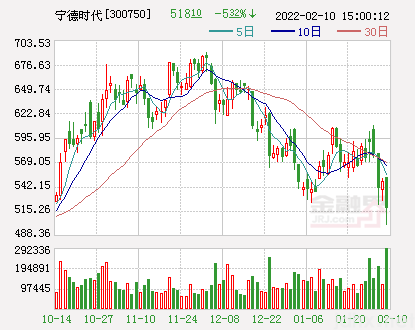阿莫斯·特沃斯基(Amos Tversky,1937年3月16号- 1996年6月2日),美国行为科学家,因对决策过程的研究而著名。他的工作不仅对心理学,而且对经济、法律等需要面对不确定性进行决策的领域都产生了很大影响,1982年获美国心理学会颁发的杰出科学贡献奖,1985年当选为国家科学院院士。而他的合作者Kahneman获得了2002年诺贝尔经济学奖。
特沃斯基与克赫曼
拥有双重国籍的心理学家克赫曼(Daniel Kahneman) 和他的伙伴Amos Tversky亲密得就象一个人一样,他们共同奋斗,向有关人们是如何形成判断及如何选择的传统观念 进行了挑战。
2002年,普林斯顿的教授克赫曼博士与乔治大学的Smith教授一起获得了诺贝尔奖。但Kahneman教授说:因为这个奖不颁给已去世的人,要不然于 1996年去世的Tversky 博士也应该分享这一荣誉。68岁的克赫曼博士说:我觉得这个奖是我俩一起得的,我们像兄弟一样共同工作已有一个世纪了。
他们于 1969年在以色列耶路撒冷就开始了合作,那时他们形影不离,或漫步在希伯来大学的草地上,或坐在某个小咖啡馆里,或在他俩共有的办公室里喝着速溶咖啡,他们总是在交谈,谈论他们共同研究的问题。后来Tversky 博士到美国斯坦福任教,克赫曼博士到美国哥伦比亚大学任教,他们每天都要通几次电话。
他们对著作中的每句话字斟句酌,直到形成一个完美的结论,现在这部书已成了研究心理学与经济学的经典专著。出书时不知将谁的名字放在前面,他们只好抛硬币决定。Tversky 博士长得瘦长结实,充满魅力,要年轻几岁。克赫曼博士则睿智无比,温和一些,多点直觉,看起来显得笨拙些。他们两个心理学家在一起共同建立了一套理论解释了人们在危险及不确定的情况下如何做出判断及决定。
一直以来经济学家们都假设人们的信仰及决定都合乎逻辑,他们将理论建构在一个理想的社会基础上,在这个社会里每个人都是理性的,寻求每个机会来提高他们的利益并使自己快乐。但克赫曼博士和Tversky博士强调在某些情况下人们的行为是不合逻辑的,他们的选择与判断不能与经济学的理想模型相吻合,他们背离理性的某些行为,心理学家可以作出解释。
比如说,一种相同的选择机会如果以不同的方式表现出来的话就会引起人们作出不同的决定,传统的经济学就不能解释这个。在一个实验中,心理学家召集一群人让他们想像一种情况,如果一种可怕的疾病暴发,可能有600人会因此死亡。现在有两种治疗方案可供选择,A方案的结果是200人肯定可以得救。B方案的结果是1/3的机会 600全都可以得救,2/3的机会连1个人也救不了。大部分受实验者都选方案A,也就是偏向于肯定的方案。
而当从人员的死亡这方面来描述如果就会不同,如果被告知如果方案A被采用400人会丧生,而方案B被采用1/3的机会没人会死,2/3的机会600人会死,这样被实验者就会选择方案B。在负面情况要出现时,大部分会倾向不肯定的方案。
二十年来,克赫曼博士和Tversky博士详细阐述了这种实验中人们的短视行为,并总结出理论来解释这一现象。通过其它各种事例的实验,他们建立的理论是:不确定的损失比得到更重要,第一印象对今后的判断很重要,具体而生动的例子比抽象的理论更有份量。——他们的一个崇拜者信服地说:“他们是用了简单而清楚有力的例子而得出结论。”甚至连经济学家,以前并不习惯从心理学的角度寻求指导,现在也开始注意这方面的动态了。他们被两篇文章吸引了,一篇是克赫曼博士搭档1974年发表在权威的《科学》杂志上的,另一篇是他们1979年发表在《经济学季刊》杂志上的。这么多年过去了,心理学家的工作为行为经济学提供了坚实的基础的结论已经得到广泛的认同。
特沃斯基的理论
前景理论(Prospect Theory,PT)首先由国外学者Kahneman和Tversky(1979)(用KT代表两个作者)明确的提出,他们认为个人在风险情形下的选择所展示出的特性和VonNeumann—Morgenstem的效用理论的基本原理是不相符的。
一是他们发现和确定性的结果相比个人会低估概率性结果,他们称之为确定性效应(Certainty Effect)。KT还指出确定性效应导致了当选择中包含确定性收益时的风险厌恶以及当选择中包含确定性损失的风险寻求。
二是他们还发现了孤立效应(Isolation Effect),即当个人面对在不同前景的选项中进行选择的问题时,他们会忽视所有前景所共有的部分。孤立效应会导致当一个前景的描述方法会改变个人决策者决策的变化。
三是KT发现了反射效应(Reflection Effect),当正负前景的前景绝对值相等时,在负前景之间的选择和在正前景之间的选择呈现镜像关系。为了补偿这些VMUT所不能解释的关于个人行为的特征,KT提出了新模型PT。
Amos Tversky
Amos Tversky, (Hebrew: ???? ???????; March 16, 1937 - June 2, 1996) was a cognitive and mathematical psychologist, and a pioneer of cognitive science, a longtime collaborator of Daniel Kahneman, and a key figure in the discovery of systematic human cognitive bias and handling of risk. Much of his early work concerned the foundations of measurement. He was co-author of a three-volume treatise, Foundations of Measurement (recently reprinted). His early work with Kahneman focused on the psychology of prediction and probability judgment. Later, he and Kahneman originated prospect theory to explain irrational human economic choices. Daniel Kahneman's autobiography for the Nobel Prize webpage contains a rich account of Tversky's personal and professional qualities and a eulogy, starting with the section "Collaboration with Amos Tversky." Daniel Kahneman received the Nobel Prize for the work he did in collaboration with Amos Tversky, who would have no doubt shared in the prize had he been alive.
Tversky received his doctorate from the University of Michigan in 1964, and later taught at the Hebrew University in Jerusalem, before moving to Stanford University. In 1984 he was a recipient of the MacArthur Fellowship. Amos Tversky was married to Barbara Tversky, now a professor in the human development department at Teachers College, Columbia University. He died of a metastatic melanoma.
He also collaborated with Thomas Gilovich, Paul Slovic and Richard Thaler in several key papers.
Comparative Ignorance
Tversky and Fox (1995) addressed ambiguity aversion, the idea that people do not like ambiguous gambles or choices with ambiguity, with the comparative ignorance framework. Their idea was that people are only ambiguity averse when their attention is specifically brought to the ambiguity by comparing an ambiguous option to an unambiguous option. For instance, people are willing to bet more on choosing a correct colored ball from an urn containing equal proportions of black and red balls than an urn with unknown proportions of balls when evaluating both of these urns at the same time. However, when evaluating them separately, people are willing to bet approximately the same amount on either urn. Thus, when it is possible to compare the ambiguous gamble to an unambiguous gamble people are averse, but not when one is ignorant of this comparison.
Notable contributionsfoundations of measurementanchoring and adjustmentavailability heuristicbase rate fallacyconjunction fallacyframingbehavioral financeclustering illusionhomo economicusloss aversionprospect theorycumulative prospect theoryrepresentativeness heuristicsupport theory
-
相关文章

 刘霆龙12.10黄金走势空头能否延续
刘霆龙12.10黄金走势空头能否延续 元宇宙到底是什么?这十点看完就明白了
元宇宙到底是什么?这十点看完就明白了 蚂蚁链“粉丝粒”,这会是全球最大NFT交
蚂蚁链“粉丝粒”,这会是全球最大NFT交 宁德时代股民年后户均亏损超百万
宁德时代股民年后户均亏损超百万 如何成为一名顶尖投资人?五点拿走不谢
如何成为一名顶尖投资人?五点拿走不谢